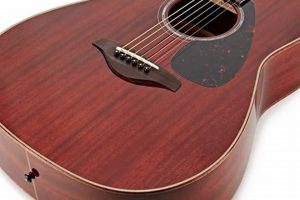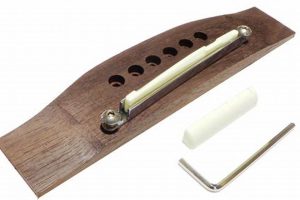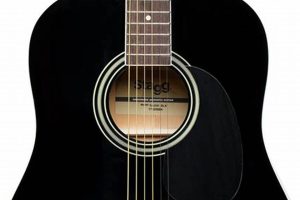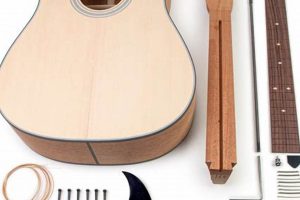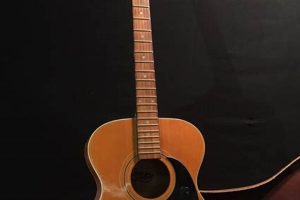Acoustic guitar setup: The Key to Unlocking Your Guitar’s True Potential
Editor’s Note:Acoustic guitar setup is a crucial step in ensuring your guitar plays and sounds its best. Whether you’re a beginner or a seasoned pro, a proper setup can make a world of difference in your playing experience.
After analyzing the importance of acoustic guitar setup and digging deep into the topic, we’ve put together this comprehensive guide to help you understand the process and make informed decisions about your own guitar.
Key Differences: Acoustic Guitar Setup vs. Electric Guitar Setup
| Acoustic Guitar Setup | Electric Guitar Setup |
|---|---|
| Focuses on optimizing the guitar’s playability and sound | Focuses on optimizing the guitar’s electrical components |
| Typically involves adjusting the neck, bridge, and nut | Typically involves adjusting the pickups, electronics, and bridge |
| Can be done by a qualified guitar technician or experienced player | Should be done by a qualified guitar technician |
The Benefits of a Professional Acoustic Guitar Setup
- Improved playability: A proper setup can make your guitar easier to play, reducing fatigue and allowing you to play for longer periods of time.
- Enhanced sound quality: A well-adjusted guitar will produce a richer, more resonant sound, making it more enjoyable to play and listen to.
- Extended guitar life: A proper setup can help to prevent damage to your guitar and extend its lifespan.
How to Find a Qualified Guitar Technician
If you’re not comfortable performing an acoustic guitar setup yourself, it’s important to find a qualified guitar technician who can do the job right. Here are a few tips:
- Ask for recommendations from friends, family, or other musicians.
- Read online reviews of local guitar shops and technicians.
- Look for a technician who is certified by a reputable organization, such as the Guitar Repair Institute.
1. Neck Relief
Neck relief, a crucial aspect of acoustic guitar setup, refers to the curvature of the guitar’s neck when viewed from the side. Optimal neck relief is essential for achieving a comfortable playing experience and accurate intonation.
- Purpose: Neck relief allows for proper string action, which is the distance between the strings and the fretboard. Too little relief can cause fret buzz, while too much relief can make the guitar difficult to play and affect intonation.
- Adjustment: Adjusting neck relief involves using a truss rod, a metal rod that runs inside the neck. By tightening or loosening the truss rod, the neck’s curvature can be adjusted.
- Factors to Consider: The ideal neck relief varies depending on the guitar’s construction, string gauge, and playing style. A qualified guitar technician can assess these factors and set the neck relief accordingly.
- Impact on Playability: Optimal neck relief contributes to a comfortable playing experience. It reduces fret buzz and allows for clear, accurate notes. Proper neck relief also improves intonation, ensuring that each string plays in tune at different frets.
In summary, neck relief is a key aspect of acoustic guitar setup that significantly impacts playability and intonation. By adjusting the curvature of the neck, guitar technicians can optimize the string action, making the guitar more enjoyable and easier to play.
2. String Height
String height, an integral aspect of acoustic guitar setup, significantly influences the playability and feel of the instrument. It refers to the distance between the strings and the fretboard, affecting the ease of fretting and overall playing comfort.
- Comfort and Playability: Optimal string height ensures a comfortable playing experience. If the strings are too high, fretting becomes difficult and tiring, hindering the player’s technique and musical expression. Conversely, if the strings are too low, they may buzz against the frets, producing unwanted noise and impairing intonation.
- Intonation and Tone: String height also affects the guitar’s intonation and tone. Proper string height allows for accurate fretting, ensuring that each note plays in tune. Additionally, the distance between the strings and the soundboard influences the guitar’s tone and volume.
- Playing Style and Technique: The ideal string height can vary depending on the player’s playing style and technique. Fingerstyle players, for example, often prefer a lower string height for ease of intricate fingerpicking, while strumming-oriented players may opt for a slightly higher string height for a more aggressive attack.
- Guitar Setup and Maintenance: String height is an adjustable aspect of acoustic guitar setup. A qualified guitar technician can measure and adjust the string height to suit the player’s preferences and the guitar’s specific characteristics. Regular maintenance, including periodic string height adjustments, helps ensure optimal playability and performance over time.
In summary, string height plays a crucial role in the comfort, playability, intonation, and tone of an acoustic guitar. By finding the optimal string height for their playing style and guitar, players can enhance their musical experience and unlock the instrument’s full potential.
3. Intonation
Intonation is a fundamental aspect of acoustic guitar setup that directly impacts the accuracy and consistency of the instrument’s sound. It refers to the adjustment of the string length to ensure that each string plays in tune at every fret position.
Proper intonation is essential for several reasons. Firstly, it allows guitarists to play chords and melodies without worrying about notes sounding out of tune. Accurate intonation enhances the overall musicality and listening experience, making the guitar more enjoyable to play and listen to.
Secondly, correct intonation helps prevent intonation-related issues such as fret buzz and wolf tones. Fret buzz occurs when a string vibrates against a fret, producing an unwanted buzzing sound. Wolf tones are specific notes that sound noticeably out of tune due to sympathetic vibrations within the guitar’s body. Proper intonation helps minimize these issues, resulting in a cleaner and more resonant sound.
Achieving optimal intonation involves adjus
ting the saddle position at the bridge. By moving the saddle forward or backward, the effective string length can be altered, ensuring that each string plays in tune at different frets. This adjustment requires specialized tools and knowledge, and it’s generally recommended to have a qualified guitar technician perform intonation setup.
Regular intonation checks and adjustments are important to maintain the guitar’s optimal performance. Changes in temperature, humidity, and string tension can affect intonation over time, so periodic adjustments may be necessary to keep the guitar sounding its best.
In summary, intonation is a crucial component of acoustic guitar setup that ensures the guitar plays in tune at all fret positions. Proper intonation enhances the playing experience, improves sound quality, and prevents intonation-related issues. Regular intonation checks and adjustments are recommended to maintain the guitar’s optimal performance.
Key Insights:
- Intonation is essential for accurate and consistent sound.
- Proper intonation prevents fret buzz and wolf tones.
- Intonation adjustments involve modifying the saddle position at the bridge.
- Regular intonation checks and adjustments are important for maintaining optimal guitar performance.
4. Bridge
The bridge plays a crucial role in acoustic guitar setup, as it directly affects the string tension and sound projection of the instrument. The bridge is responsible for transmitting the vibrations of the strings to the soundboard, which amplifies and projects the sound.
Adjusting the height and angle of the bridge is essential for achieving optimal string tension and sound quality. The string tension determines the pitch and intonation of the guitar, while the bridge angle influences the break angle of the strings over the saddle. A proper break angle ensures that the strings have enough downward pressure on the saddle to produce a clear and resonant sound.
An improperly adjusted bridge can lead to a number of problems, including:
- Intonation issues: An incorrect bridge height or angle can cause the guitar to play out of tune, especially at higher frets.
- String buzz: A bridge that is too low can cause the strings to buzz against the frets, producing an unwanted rattling sound.
- Reduced sustain: An improperly adjusted bridge can reduce the guitar’s sustain, making notes die out prematurely.
A qualified guitar technician can properly adjust the bridge height and angle to suit the specific guitar and playing style. This involves measuring the string height at the 12th fret, adjusting the bridge saddles accordingly, and checking the intonation at different frets.
By optimizing the bridge height and angle, guitarists can achieve improved intonation, reduced string buzz, and enhanced sustain, resulting in a more enjoyable and satisfying playing experience.
Key Insights:
- The bridge is a crucial component of acoustic guitar setup that directly affects string tension and sound projection.
- Proper bridge adjustment is essential for achieving optimal intonation, reducing string buzz, and enhancing sustain.
- An improperly adjusted bridge can lead to a number of problems, including intonation issues, string buzz, and reduced sustain.
- A qualified guitar technician can properly adjust the bridge height and angle to suit the specific guitar and playing style.
5. Nut
The nut is a small but crucial component of an acoustic guitar, located at the headstock where the strings are attached. It serves two primary functions: 1) to hold the strings in place and 2) to determine the string height and spacing at the first fret.
The slots in the nut are carefully cut to accommodate each string, and the spacing between the slots is equally important. The height of the nut affects the action, or distance between the strings and the fretboard. A properly adjusted nut will ensure that the strings are at the correct height for comfortable playing and accurate intonation.
If the nut is too high, the strings will be too far from the fretboard, making it difficult to fret notes cleanly. Conversely, if the nut is too low, the strings will be too close to the fretboard, causing them to buzz against the frets when played.
The spacing of the nut slots is also important for intonation. If the slots are too narrow, the strings will be too close together, which can cause them to interfere with each other when played. If the slots are too wide, the strings will be too far apart, making it difficult to play chords accurately.
A qualified guitar technician can properly adjust the height and spacing of the nut to suit the specific guitar and playing style. This is a crucial step in acoustic guitar setup, as it directly affects the playability and intonation of the instrument.
Key Insights:
- The nut is a crucial component of an acoustic guitar that affects string height and spacing.
- The height of the nut determines the action, or distance between the strings and the fretboard.
- The spacing of the nut slots affects intonation and playability.
- A properly adjusted nut is essential for optimal playability and intonation.
Practical Significance:
Understanding the importance of the nut in acoustic guitar setup allows guitarists to make informed decisions about their instrument. By ensuring that the nut is properly adjusted, guitarists can improve the playability and intonation of their guitar, resulting in a more enjoyable playing experience.
6. Saddle
The saddle is a small but crucial component of an acoustic guitar’s bridge. It is responsible for adjusting the string height at the bridge, which directly affects the guitar’s intonation and tone.
Intonation refers to the accuracy of the guitar’s tuning across the entire fretboard. A properly intonated guitar will play in tune at every fret, making it easier to play chords and melodies without any noticeable pitch discrepancies.
Tone, on the other hand, refers to the unique sound quality of the guitar. The saddle plays a role in shaping the guitar’s tone by adjusting the string height at the bridge. A higher saddle will result in a brighter, more metallic tone, while a lower saddle will produce a warmer, more mellow tone.
The ideal saddle height will vary depending on the specific guitar and playing style. A qualified guitar technician can adjust the saddle height to suit the player’s preferences and the guitar’s unique characteristics.
Key Insights:
- The saddle is a crucial component of an acoustic guitar’s bridge.
- The saddle height affects the guitar’s intonation and tone.
- A properly adjusted saddle is essential for optimal playability and sound quality.
Practical Significance:
Understanding the importance of the saddle in acoustic guitar setup allows guitarists to make informed decisions about their instrument. By ensuring that the saddle is properly adjusted, guitarists can improve the intonation and tone of their guitar, resulting in a more en
joyable playing experience.
7. Frets
In the context of acoustic guitar setup, frets play a crucial role in ensuring proper string contact and playability. Leveling and dressing frets involves adjusting the height and shape of the frets to ensure that they are even and provide optimal contact with the strings.
- Improved Intonation: Properly leveled and dressed frets allow for more accurate intonation, as each fret is precisely adjusted to its correct height. This ensures that notes played at different frets are in tune with each other, resulting in a more harmonious and pleasing sound.
- Enhanced Playability: Leveled and dressed frets reduce buzzing and fretting out, making the guitar easier to play. By eliminating uneven surfaces and sharp edges, players can fret notes cleanly and comfortably, allowing for smoother transitions and improved technique.
- Extended Fret Life: Regular fret leveling and dressing helps preserve the lifespan of the frets. By removing wear and tear, frets maintain their shape and height, reducing the need for frequent replacement and costly repairs.
- Tonal Consistency: Properly leveled and dressed frets contribute to the overall tonal consistency of the guitar. By ensuring even contact between the strings and the frets, the guitar produces a more balanced and resonant sound across the entire fretboard.
In summary, fret leveling and dressing are essential aspects of acoustic guitar setup that directly impact the playability, intonation, tone, and longevity of the instrument. By maintaining the frets in optimal condition, guitarists can enhance their playing experience, improve their technique, and preserve the value of their guitar.
8. Electronics (if applicable)
In the realm of acoustic guitar setup, the incorporation of electronics, particularly pickups, plays a vital role in optimizing sound reinforcement. Pickups are devices that convert the vibrations of the guitar strings into electrical signals, allowing the guitar to be amplified and played through external speakers or sound systems.
The placement and adjustment of these pickups significantly impact the overall sound quality and functionality of the amplified guitar. Proper pickup placement ensures that the strings’ vibrations are captured accurately, resulting in a balanced and natural sound. By adjusting the pickup’s height and distance from the strings, guitarists can fine-tune the volume and tonal characteristics of each string, accommodating their playing style and musical preferences.
For instance, moving the pickup closer to the bridge typically produces a brighter, more percussive sound, while positioning it further away yields a warmer, fuller tone. Additionally, adjusting the pickup’s height can affect the guitar’s feedback resistance, allowing guitarists to play at higher volumes without experiencing unwanted feedback.
Understanding the connection between electronics and acoustic guitar setup empowers guitarists to tailor their sound, enhance their performance capabilities, and explore a wider range of musical possibilities. It also underscores the importance of seeking professional assistance for proper pickup installation and adjustment, ensuring optimal sound reinforcement and preserving the integrity of the instrument.
| Key Insight | Practical Application |
|---|---|
| Proper pickup placement captures string vibrations accurately, resulting in a balanced and natural sound. | Guitarists can experiment with different pickup positions to find the optimal sound for their playing style and genre. |
| Adjusting pickup height influences the guitar’s volume and tonal characteristics. | Lowering the pickup height can reduce feedback and produce a warmer tone, while raising it can increase volume and brightness. |
| Professional installation and adjustment ensure optimal sound reinforcement and preserve the guitar’s integrity. | Seeking assistance from a qualified technician guarantees proper pickup placement, wiring, and grounding, minimizing potential issues and maximizing sound quality. |
Frequently Asked Questions about Acoustic Guitar Setup
Acoustic guitar setup is a crucial process that optimizes the playability, sound quality, and longevity of your instrument. Here are answers to some frequently asked questions to provide clarity and guidance:
Question 1: Why is a professional acoustic guitar setup important?
Answer: A professional setup ensures that your guitar is adjusted to its optimal performance level. It addresses factors like string height, intonation, and neck relief, which directly impact playability, intonation, and overall sound quality. Regular setups also help prevent potential issues and extend the life of your guitar.
Question 2: How often should I get my acoustic guitar set up?
Answer: The frequency of setups depends on several factors, including playing style, environmental conditions, and personal preferences. Generally, it’s recommended to get a professional setup at least once a year or whenever you notice a significant change in playability or sound.
Question 3: What are the common problems that a professional setup can address?
Answer: A comprehensive setup can resolve various issues such as fret buzz, intonation problems, high or low string action, and difficulty playing certain chords or notes. It also ensures that the guitar’s electronics (if applicable) are functioning correctly.
Question 4: Can I perform an acoustic guitar setup myself?
Answer: While it’s possible to make basic adjustments yourself, a professional setup typically requires specialized tools and expertise. Attempting a DIY setup without proper knowledge and experience can lead to further issues or damage to your guitar.
Question 5: What should I look for when choosing a guitar technician for a setup?
Answer: Look for a qualified technician with experience and a good reputation. Check online reviews, ask for recommendations from other musicians or music stores, and consider their knowledge and attention to detail.
Question 6: How much does a professional acoustic guitar setup typically cost?
Answer: The cost of a professional setup can vary depending on the technician’s experience, location, and the condition of your guitar. It’s best to contact local guitar shops or repair centers for specific pricing.
Summary:
Regular professional setups are essential for maintaining the health and performance of your acoustic guitar. By addressing common issues, optimizing playability, and enhancing sound quality, a well-executed setup can transform your playing experience and extend the life of your instrument.
Next Section: Acoustic Guitar Setup: Essential Aspects to Consider
Acoustic Guitar Setup Tips
Optimizing your acoustic guitar’s setup is crucial for enhancing playability, sound quality, and overall performance. Her
e are some essential tips to guide you:
Tip 1: Determine Your Playing Style and Needs
Identify your playing style, whether it’s strumming, fingerpicking, or lead playing. Consider the genres you play and the techniques you commonly use. This will help you make informed decisions about string gauge, neck relief, and other setup parameters.
Tip 2: Check and Adjust Neck Relief
Neck relief refers to the curvature of the guitar’s neck. Proper neck relief ensures optimal string action, reducing fret buzz and improving playability. Use a feeler gauge or straightedge to measure and adjust the neck relief as needed.
Tip 3: Set the String Height
String height, the distance between the strings and the fretboard, significantly impacts playability and sound. Adjust the string height at the nut and bridge to suit your playing style and preferences. Lower string height facilitates easier fretting, while higher string height provides more volume and sustain.
Tip 4: Ensure Accurate Intonation
Intonation is crucial for ensuring that each note plays in tune at every fret. Use a tuner and adjust the bridge saddle to achieve accurate intonation. This will improve the overall sound quality and make chords and melodies sound harmonious.
Tip 5: Check and Dress Frets
Over time, frets can become worn or uneven. Leveling and dressing frets involves filing and polishing them to ensure proper contact with the strings. This improves intonation, reduces fret buzz, and prolongs fret life.
Tip 6: Clean and Lubricate the Guitar
Regular cleaning and lubrication of your guitar’s components, such as the fretboard, bridge, and tuning pegs, helps maintain optimal performance. Use a soft cloth and appropriate cleaning solutions to remove dirt and grime. Lubricate moving parts to reduce friction and improve functionality.
Summary:
Following these tips can significantly enhance your acoustic guitar’s setup, resulting in improved playability, sound quality, and longevity. Remember that a professional guitar technician can provide expert assistance for more complex adjustments and ensure your guitar is set up to its full potential.
Acoustic Guitar Setup
Acoustic guitar setup is a crucial process that lays the foundation for a truly enjoyable and rewarding playing experience. By optimizing factors such as neck relief, string height, intonation, fret condition, and overall cleanliness, guitarists can unlock their instrument’s full potential.
A well-executed acoustic guitar setup empowers musicians to play with greater ease, accuracy, and expressiveness. It ensures that every note resonates clearly, every chord rings true, and every strum feels effortless. Moreover, proper setup extends the lifespan of the guitar, preserving its playability and value for years to come.
Whether you’re a seasoned professional or a budding enthusiast, investing in a professional acoustic guitar setup is an investment in your musical journey. It’s a step towards unlocking your creativity, enhancing your technique, and experiencing the pure joy that comes from playing a guitar that feels and sounds its absolute best.
Youtube Video:



